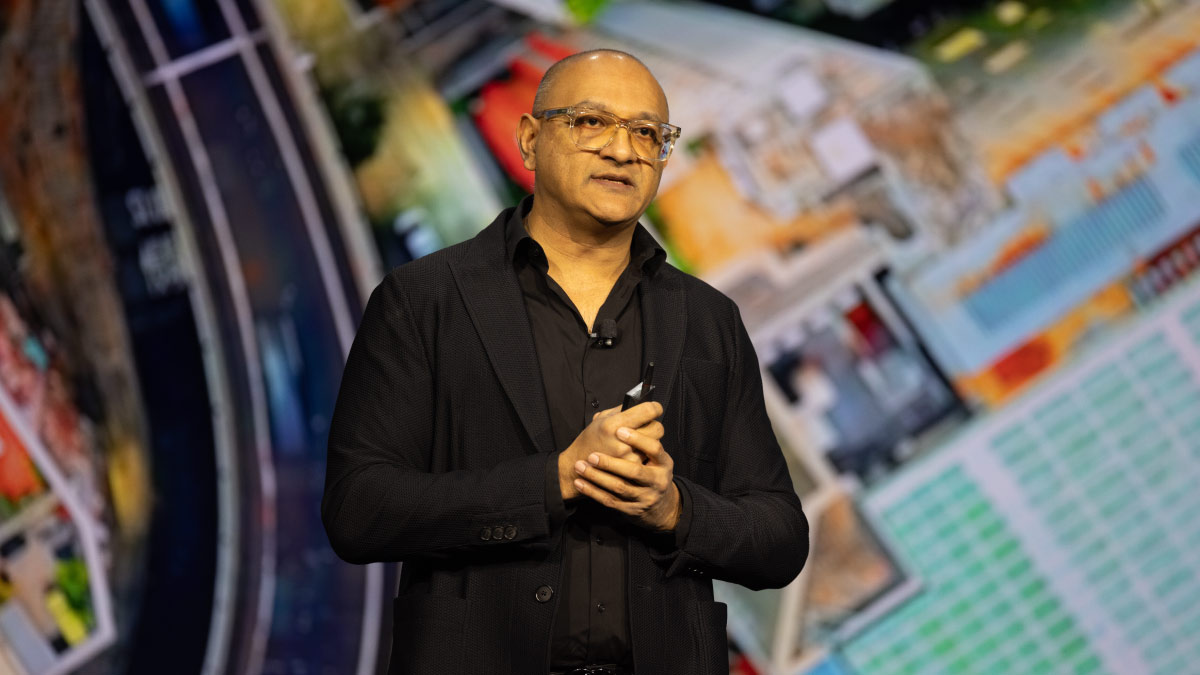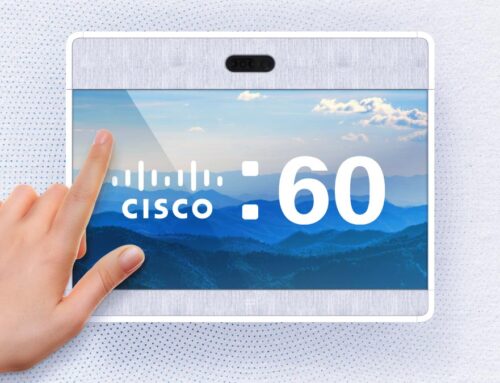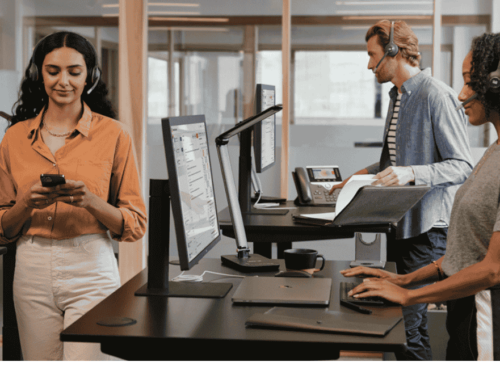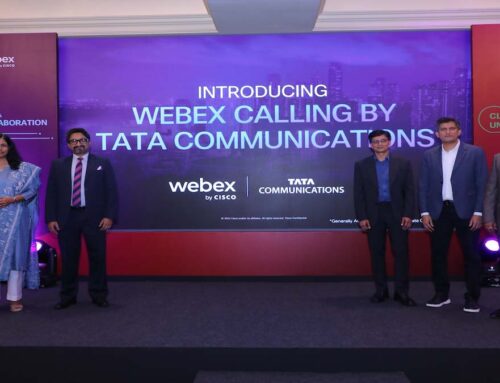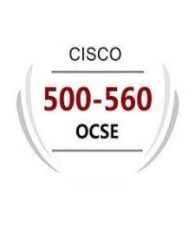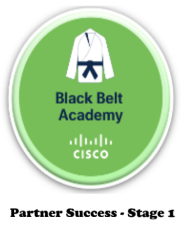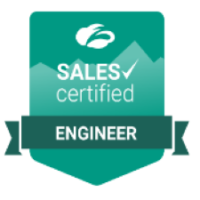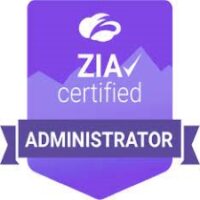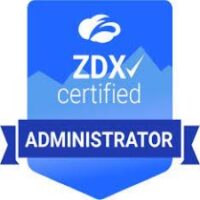Cisco’s Jeetu Patel leads a panel at WebexOne on what to expect at work, leadership in a hybrid-work world, and how AI will change a lot (but not everything!). More RSS Feeds: https://newsroom.cisco.com/c/r/newsroom/en/us/rss-feeds.html
Cisco’s Jeetu Patel leads a panel at WebexOne on what to expect at work, leadership in a hybrid-work world, and how AI will change a lot (but not everything!). More RSS Feeds: https://newsroom.cisco.com/c/r/newsroom/en/us/rss-feeds.html Read More Cisco Newsroom: Collaboration
In 2020, the future of work arrived, well ahead of schedule. But just as we’re assimilating the lessons of the lockdown, get ready for another wave of change. Not just from the rapid rise of artificial intelligence and other technologies, but from a restive workforce that continues to rebel against outmoded work cultures and return-to-office mandates.
To unravel just where all this is going, Cisco’s Jeetu Patel, EVP and general manager of security and collaboration, assembled a panel of top tech journalists. Speaking at Cisco’s WebexOne event in Anaheim, Calif. last month, the discussion — featuring Richard Miniter, author and CEO of Zenger News; Rebecca Knight, writer at BBC, Harvard Business Review, and others; and Jon Swartz, senior reporter for Dow Jones — explored just what the next future of work will look like. Topics included the impact and importance of AI (and the fears it evokes), organizational philosophies on hybrid work, and critical concerns around data security and privacy.
Patel started a question concerning the state of work today — in short, what’s working for workers — and what isn’t.
Miniter answered with some thoughts on the great opportunities that arise from a highly flexible hybrid work environment.
“If you are a single mother,” he argued, “the technology from companies like Cisco allows you to truly operate an office from your home. That’s liberating for her economically … but it also allows the organization to see her potential and grow in her career.”
Knight agreed, adding that workers will not go back to the old ways.
“It used to be you had to live where you worked,” she said. “That was just the economic reality for having a job, having a career. That’s no longer true for a lot of smart companies that are not forcing [back-to-the-office] mandates. Employees don’t want that. They don’t want to be told what to do.”
Speaking from his own experience, Swartz agreed that mandates rarely work.
“There was an edict within Dow Jones for us to go back to the office at least three days a week,” he said. “But we’ve had that edict three different times over the last nine months and no one’s gone back. People do volunteer to go back, but just for human contact.”
On screen or in person, leadership looms
Speaking of human contact, the panel explored the changing nature of leadership and collaboration — and the kinds of soft skills the future of work will demand.
“For the next generation of leader,” Patel argued, “It’s going to be really important to be good at building deep relationships without ever having met someone in person. If the prerequisite is you have to meet someone in order to be a good leader, you’re going to limit yourself in the kind of talent you’re going to be able to find.”
The panel agreed that face-to-face interactions and the office itself will continue to play an essential role, even if it’s never again Monday through Friday every week.
“Because of the way technology has evolved,” Swartz said, “it’s minimized face-to-face contact whether through social media or video. So, the means of communication have totally changed, but you really do need some sort of pairing of the two. You just can’t be at home all the time. I mean, sometimes I feel as if I’m totally disconnected from the people I work with.”
There was particular concern regarding younger-in-career workers, who could miss out on important mentoring and social opportunities.
“I was a news clerk at the New York Times,” Knight recalled, “and you learned through osmosis just watching and hearing great journalists apply their craft. It certainly wasn’t like that in Business Insider when I was there recently. The young people were working at home like me.”
The office can still facilitate that kind of connection, Patel argued, but without the rigid strictures of the past — and office design, as well as company cultures, will need to adapt.
“The role of the office is fundamentally changing,” he said. “People go into the office to have a social experience collaborating with people; people work at home when they need to make sure that their heads-down trying to get something done.”
In lieu of face-to-face leadership and office interactions, however, human skills and culture still reign supreme in a hybrid work world — for leaders and workers alike.
“Work is a state of mind nowadays,” Knight said, “because we’re not going to an office every day. But how are people experiencing this? What kind of community are we creating? How are we treating each other? Are we cutthroat? Are we competitive? Are we compassionate? Those kinds of leadership skills are required, but also to be a good colleague.”
Artificial Intelligence in a (still) human-centric world
As for AI, all agreed that its impact on work is already enormous — and not slowing anytime soon. But that human talent will not be eclipsed.
Speaking from his own experience as a journalist, Miniter sees the value of AI in its ability to augment, streamline, and support work.
“I do not think we’re going to end up in a world in which AI writes most news stories,” he predicted. “I think we’re going to end up in a world very soon if we’re not halfway there, in which AI puts together the research and the structure of a news story.”
Knight is already there, using AI to support her writing efforts on a daily basis — somewhat to her own surprise.
“It’s definitely made me a better writer,” she said. “It also takes away a little bit of the loneliness of working from home. I almost feel like I’ve got a writing partner… I’m surprised at how I use it every day, and I can’t imagine my life without it.”
AI will indeed have a huge impact across society, however. And all agreed that some workers will not fare as well as journalists in maintaining a relationship with AI without being replaced by it.
Privacy and security concerns were also raised, and Patel stressed the need for better public- and private-sector cooperation.
“You’ll start to see a far tighter relationship between the public sector and private sector,” he said, “because I don’t think the private sector can be completely unregulated in this particular case. And we will own some responsibility in the private sector in educating the public sector on how quickly things are moving.”
To that end, Swartz sounded a positive note on some AI regulations being explored in the United States.
“I am actually encouraged about lawmakers, AI, and regulation,” he said, “and the forums through the Senate and through the White House. Because they’re trying to find a balance between innovation and however we want to define privacy.”
Regardless of the technologies involved — hybrid collaboration tools, AI, or whatever comes next — humans will always be at the heart of work. And creating the right experience for them will always mean the difference between success and failure.
“The fear of AI is real,” Knight concluded. “So, you don’t discount that. And technology will help solve a lot of the problems of what does the future of work look like, but it won’t solve all of them. A lot of it does come down to what we’ve been talking about, leadership and the actual human behaviors and practices of working together to get the job done.”
As Patel has often stressed, creating great work experiences for everyone — no matter where they are in the world — demands concerted, integrated efforts. That means from tech providers, business leaders, employees, IT, and so on. And as the WebexOne discussion confirmed, the opportunities hybrid work presents are great. But we all need to work together to make it happen.
The full panel can be viewed below.

